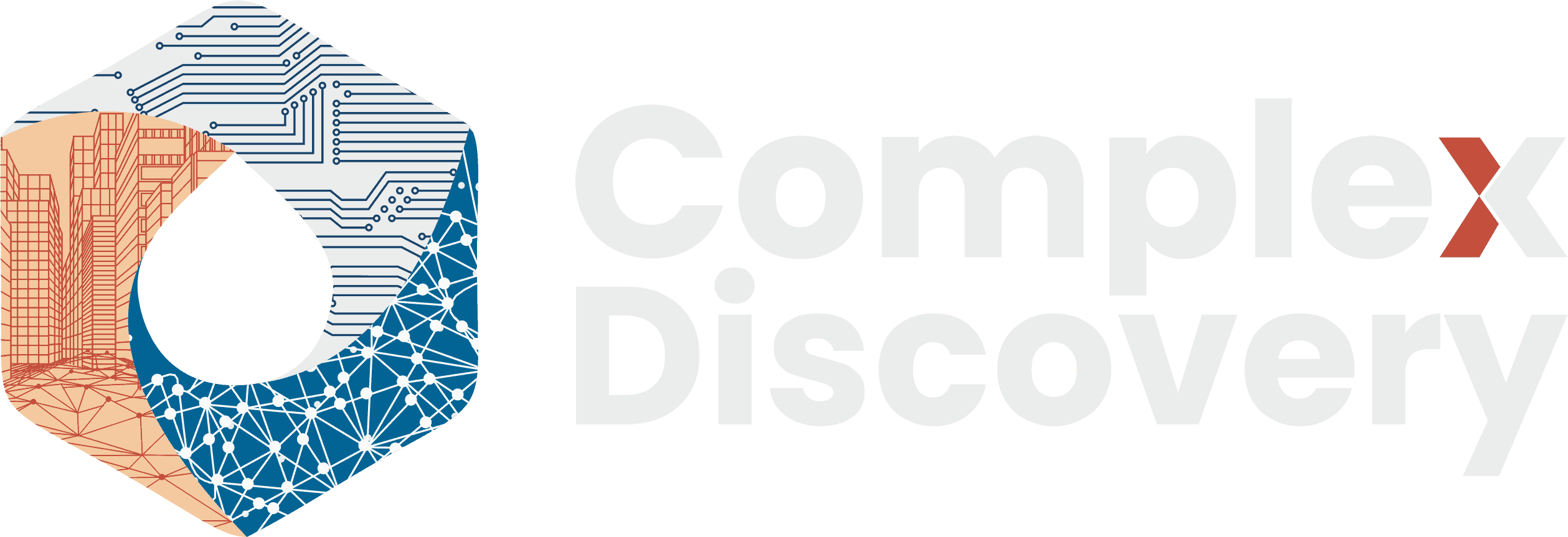Editor’s Note: As M&A activity unfolds in 2025, regulatory scrutiny and economic shifts are reshaping corporate deal-making. January’s HSR filings totaled 178, offering an early glimpse into the year’s transaction trends. However, major changes to HSR filing requirements taking effect on February 10, 2025, introduce expanded disclosures on deal rationale, labor impact, supply chain risks, and cybersecurity measures, significantly increasing compliance burdens for merging companies.
At the same time, the December 2024 trade deficit surged to $98.4 billion, a nearly $20 billion increase from the previous month, highlighting potential challenges for cross-border transactions and international regulatory compliance. These factors will impact M&A due diligence, deal structuring, and risk assessments, requiring businesses to adopt proactive regulatory and cybersecurity strategies.
For cybersecurity, information governance, and eDiscovery professionals, this evolving regulatory landscape heightens the need for robust security frameworks, AI-driven compliance tools, and defensible data governance practices. This report explores January’s HSR trends, the implications of new regulatory requirements, and how deal teams must adapt to remain competitive in 2025.
Content Assessment: HSR Transactions in January 2025: What the Latest Data Reveals About M&A Trends
Information - 93%
Insight - 90%
Relevance - 90%
Objectivity - 92%
Authority - 93%
92%
Excellent
A short percentage-based assessment of the qualitative benefit expressed as a percentage of positive reception of the recent article from ComplexDiscovery OÜ titled, "M&A in 2025: What January’s HSR Transactions Signal for the Year Ahead"
Background Note: The Hart-Scott-Rodino (HSR) Act established the Premerger Notification Program, requiring certain mergers and acquisitions to be reported to the Federal Trade Commission (FTC) and the Department of Justice (DOJ) for antitrust review. This program ensures that transactions meeting specific thresholds are evaluated for their potential impact on competition before they are finalized. The HSR filing process plays a critical role in preserving competitive markets by identifying and addressing potential risks, such as monopolistic practices or reduced consumer choice.
Under the program, companies must submit detailed documentation about the transaction and the parties involved. A waiting period—typically 30 days—follows, allowing regulators to review the deal and determine whether further investigation is needed. This process can impact transaction timelines and requires robust compliance and information governance frameworks to manage the regulatory requirements.
Industry News – Antitrust Beat
M&A in 2025: What January’s HSR Transactions Signal for the Year Ahead
ComplexDiscovery Staff
As the first month of 2025 comes to a close, the mergers and acquisitions landscape is already taking shape. With 178 HSR transactions recorded in January, companies are cautiously but actively engaging in strategic deal-making. Economic stability, regulatory scrutiny, and digital risk management are all converging to define how deals are structured and executed. But what do these early trends tell us about the year ahead? And how will cybersecurity, information governance, and eDiscovery professionals play a role in shaping the success—or failure—of these transactions?
Economic Growth and M&A Market Conditions
The backdrop to January’s HSR activity is a U.S. economy that continues to expand at a measured pace. Real gross domestic product (GDP) grew at an annualized rate of 2.3% in Q4 2024, slightly below the 3.1% growth seen in the previous quarter. Over the full year, real GDP expanded by 2.8%, compared to 2.9% in 2023, driven largely by consumer spending and government expenditures.
Inflationary pressures remained stable, with the PCE price index rising 2.5% year-over-year in 2024, down from 3.8% in 2023. Meanwhile, the core PCE price index (excluding food and energy) increased by 2.8% year-over-year, compared to 4.1% in 2023, indicating that cost pressures in key areas such as labor and services persist. These figures suggest a gradual cooling of inflation, reinforcing the Federal Reserve’s monetary policy stance while maintaining consumer purchasing power and corporate investment incentives.
Consumer behavior also played a key role in shaping the corporate transaction landscape. Personal income rose by $92 billion (0.4%) in December, while consumer spending increased by $133.6 billion (0.7%). A declining personal savings rate of 3.8%, however, may suggest some vulnerability in household financial security, potentially influencing long-term investment decisions by corporations.
One of the most significant economic developments was the widening of the international trade deficit to $98.4 billion, a nearly $20 billion increase from the previous month’s deficit of $78.9 billion. This sharp rise underscores growing import demand and trade imbalances, which could affect supply chain costs, cross-border transactions, and regulatory compliance requirements for international M&A deals.
For cybersecurity, information governance, and eDiscovery professionals, these economic indicators highlight the growing risks and opportunities associated with M&A transactions. As businesses become more data-driven, digital assets, customer information, and regulatory compliance requirements are now central considerations in every deal. Companies must implement strong cybersecurity frameworks and governance policies to protect against potential data breaches, regulatory fines, and operational disruptions arising from acquisitions.
HSR Transactions, Regulatory Changes, and the State of M&A in 2025
The 178 reportable transactions in January 2025 reflect a steady but selective approach to deal-making. Over the past year, HSR transaction activity has demonstrated distinct patterns, with notable spikes in August (218 transactions) and November (233 transactions), reflecting strategic year-end positioning. The drop to 178 in January, though still strong, suggests companies are taking a measured approach to acquisitions amid continued regulatory scrutiny.
Adding complexity to this landscape are significant changes to HSR filing requirements, which took effect on February 10, 2025. The FTC and DOJ introduced substantial modifications to the premerger notification process, requiring more detailed disclosure of transaction rationale, labor market impact, and supply chain risks. These reforms represent the most sweeping changes to antitrust review procedures in decades and are expected to increase the compliance burden on merging companies.
For cybersecurity, information governance, and eDiscovery professionals, these new filing requirements mean M&A due diligence must be even more rigorous. Companies must now prepare extensive documentation about business operations, data security measures, and potential market impacts well before submitting an HSR filing. Failure to comply with these expanded requirements could result in delays, regulatory challenges, and even abandoned deals. The heightened scrutiny reinforces the need for early risk assessments, data governance strategies, and AI-driven eDiscovery solutions to ensure a smooth regulatory review process.
Sector-Specific Trends Shaping M&A in 2025
As regulatory scrutiny and economic conditions shape M&A strategies, sector-specific factors play an equally significant role in determining deal flow and risk management priorities. The technology, healthcare, and financial services sectors continue to be the most active in corporate transactions, each influenced by unique market drivers, regulatory challenges, and digital transformation initiatives. Understanding the key trends within these industries is essential for navigating the evolving M&A landscape in 2025.
Technology Sector: AI, Cybersecurity, and Cloud Computing Drive Deals
M&A activity in the technology sector remains highly active, with continued investment in artificial intelligence (AI), cybersecurity solutions, and cloud computing services. Big tech firms are acquiring AI-driven companies to strengthen automation, data analytics, and cybersecurity capabilities, but FTC and DOJ scrutiny of AI-related mergers has intensified. Companies must now demonstrate how acquisitions will not result in market monopolization or unfair competitive advantages.
Healthcare Sector: Pharmaceutical Mergers and Digital Health Investments Surge
The healthcare sector is experiencing strong consolidation trends, particularly among pharmaceutical firms, medical device manufacturers, and digital health companies. The expansion of telemedicine and AI-powered diagnostics is driving M&A deals, but patient data security remains a major concern. Cybersecurity and information governance professionals must ensure compliance with HIPAA, GDPR, and other data protection laws, especially as health records become increasingly digitized.
Financial Services Sector: Fintech Acquisitions and Data Security Risks
The financial sector continues to experience rapid fintech-driven M&A, with banks acquiring digital-first financial platforms to expand mobile banking, blockchain, and automated lending capabilities. However, integration challenges and heightened SEC and FTC oversight of financial transactions require companies to address cybersecurity vulnerabilities and compliance risks before finalizing acquisitions.
Looking Ahead: The Future of M&A in 2025
As organizations move further into 2025, the trends observed in January’s HSR activity serve as early indicators of the challenges and opportunities ahead. The new HSR filing requirements, coupled with rising regulatory scrutiny, evolving economic conditions, and sector-specific consolidation strategies, will reshape how companies approach M&A transactions in the months to come.
The increasing complexities of cross-border trade imbalances, regulatory compliance mandates, and cybersecurity threats mean that dealmakers can no longer rely on traditional M&A playbooks. Instead, they must adopt proactive risk assessment strategies, integrate regulatory compliance frameworks, and embed data security protocols from the earliest stages of a transaction to mitigate potential liabilities.
For cybersecurity, information governance, and eDiscovery professionals, the heightened regulatory landscape elevates their role in corporate transactions like never before. Organizations that align security, compliance, and legal frameworks preemptively will not only avoid costly regulatory delays but will also position themselves as leaders in an increasingly digitized and scrutinized deal-making environment.
With January’s 178 HSR transactions setting the tone for the year, the question now is not just which deals will succeed—but which companies will be prepared for the challenges ahead.
Transaction Charts
Taken from the latest published Hart-Scott-Rodino (HSR) Premerger Notification monthly transactions as shared by the Federal Trade Commission (FTC) and augmented by released annual reports, the following transaction charts may be useful for law firms, legal departments, and legal service providers seeking to understand the real-time pulse rate of Hart-Scott-Rodino Act mandated transaction reviews. As these reviews may lead to Second Requests, the charts may also be useful as a baseline for considering provider assertions regarding the depth, breadth, and volume of their Second Request support for this unique type of eDiscovery during specific time frames.
Chart 1: HSR Act Annual Transactions Reported in Fiscal Years 2000 – 2025*/**
HSR Act Merger Transactions Reported - Aggregate - January 2025Chart 2: Monthly HSR Act Transactions Reported in the Fiscal Year 2025 (October-September)*
HSR Act Merger Transactions Reported - FY 2025 - January 2025Chart 3: Monthly HSR Act Transactions Reported in the Fiscal Year 2024 (October-September)*
HSR Act Merger Transactions Reported - FY 2024 - January 2025Chart 4: Monthly HSR Act Transactions Reported in the Fiscal Year 2023 (October-September)**
HSR Act Merger Transactions Reported - FY 2023 - January 2025*Monthly Real-Time Reporting – First Report is October 2019 (Monthly Running Report)
**Based on Annual Reporting as Represented in Final Annual HSR Transaction Reports.
News Sources
- Premerger Notification Program | Federal Trade Commission (ftc.gov)
- Gross Domestic Product, 4th Quarter and Year 2024 (Advance Estimate) | U.S. Bureau of Economic Analysis (BEA)
- Personal Income and Outlays, December 2024 | U.S. Bureau of Economic Analysis (BEA)
- U.S. International Trade in Goods and Services, December and Annual 2024 | U.S. Bureau of Economic Analysis (BEA)
- December 2024 Economic Trends and HSR Activity: Implications for M&A, eDiscovery, and Governance
Assisted by GAI and LLM Technologies
Additional Reading
- HSR Act Reporting: A ComplexDiscovery Chronology
- FTC Annual Competition Reports (Hart-Scott-Rodino Act Reports)
Source: ComplexDiscovery OÜ



























